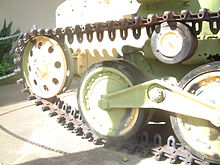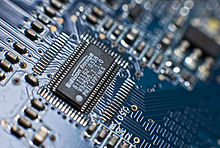Robotics:
Robotics is a branch of engineering and science that includes the mechanical engineering, electrical engineering, computer science and others. Robotics deals with design, construction, operation and use of robots, as well as computer system for their control, sensory feedback and information processing.
The technology are used to make medicines that can substitute for humans and replicate human action.Robots can be used in any situation and for any purpose, but today many are used in dangerous environment(including bomb detection and bomb de-activation), manufacturing process, or where human can not survive.Robots can take on any form but some are made to resemble human apperance. This is said to help acceptance of robot in certain replicative behaviours usually perform by people. Such robots attempt to replicate walking,lifting, speech ,basically a human can do. Many of the today's robot inspired by nature,contributing to the field bio-inspired robotics.
Robotics is a branch of engineering that involves conception,design, manufacture, and opertion of robots. This field overlaps with electronics, computer science, artificial intelligence, nanotecnology and bioengineering.

Robotics is a branch of engineering that involves conception,design, manufacture, and opertion of robots. This field overlaps with electronics, computer science, artificial intelligence, nanotecnology and bioengineering.

Etymology:
The word robotics was derived from the word robot, which was introduced to the public by Czech writer Karel Čapek in his play R.U.R. (Rossum's Universal Robots), which was published in 1920. The word robot comes from the Slavic word robota, which means labour. The play begins in a factory that makes artificial people called robots, creatures who can be mistaken for humans – very similar to the modern ideas of androids. Karel Čapek himself did not coin the word. He wrote a short letter in reference to an etymology in the Oxford English Dictionary in which he named his brother Josef Čapek as its actual originato.
According to the Oxford English Dictionary, the word robotics was first used in print by Isaac Asimov, in his science fiction short story "Liar!", published in May 1941 in Astounding Science Fiction. Asimov was unaware that he was coining the term; since the science and technology of electrical devices is electronics, he assumed robotics already referred to the science and technology of robots. In some of Asimov's other works, he states that the first use of the word robotics was in his short story Runaround (Astounding Science Fiction, March 1942). However, the original publication of "Liar!" predates that of "Runaround" by ten months, so the former is generally cited as the word's origin.
History:
In 1942, the science fiction writer Isaac Asimov created his Three Laws of Robotics.
In 1948, Norbert Wiener formulated the principles of cybernetics, the basis of practical robotics.
Fully autonomous only appeared in the second half of the 20th century. The first digitally operated and programmable robot, the Unimate, was installed in 1961 to lift hot pieces of metal from a die casting machine and stack them. Commercial and industrial robots are widespread today and used to perform jobs more cheaply, more accurately and more reliably, than humans. They are also employed in some jobs which are too dirty, dangerous, or dull to be suitable for humans. Robots are widely used in manufacturing, assembly, packing and packaging, mining, transport, earth and space exploration, surgery, weaponry, laboratory research, safety, and the mass production of consumer and industrial goods.
Robotic aspects:
There are many types of robots; they are used in many different environments and for many different uses, although being very diverse in application and form they all share three basic similarities when it comes to their construction:
- Robots all have some kind of mechanical construction, a frame, form or shape designed to achieve a particular task. For example, a robot designed to travel across heavy dirt or mud, might use caterpillar tracks. The mechanical aspect is mostly the creator's solution to completing the assigned task and dealing with the physics of the environment around it. Form follows function.
- Robots have electrical components which power and control the machinery. For example, the robot with caterpillar tracks would need some kind of power to move the tracker treads. That power comes in the form of electricity, which will have to travel through a wire and originate from a battery, a basic electrical circuit. Even petrol powered machines that get their power mainly from petrol still require an electric current to start the combustion process which is why most petrol powered machines like cars, have batteries. The electrical aspect of robots is used for movement (through motors), sensing (where electrical signals are used to measure things like heat, sound, position, and energy status) and operation (robots need some level of electrical energy supplied to their motors and sensors in order to activate and perform basic operations)
- All robots contain some level of computer programming code. A program is how a robot decides when or how to do something. In the caterpillar track example, a robot that needs to move across a muddy road may have the correct mechanical construction and receive the correct amount of power from its battery, but would not go anywhere without a program telling it to move. Programs are the core essence of a robot, it could have excellent mechanical and electrical construction, but if its program is poorly constructed its performance will be very poor (or it may not perform at all). There are three different types of robotic programs: remote control, artificial intelligence and hybrid. A robot with remote control programing has a preexisting set of commands that it will only perform if and when it receives a signal from a control source, typically a human being with a remote control. It is perhaps more appropriate to view devices controlled primarily by human commands as falling in the discipline of automation rather than robotics. Robots that use artificial intelligence interact with their environment on their own without a control source, and can determine reactions to objects and problems they encounter using their preexisting programming. Hybrid is a form of programming that incorporates both AI and RC functions.




Application:
Current and potential applications include:
- Military robots
- Caterpillar plans to develop remote controlled machines and expects to develop fully autonomous heavy robots by 2021. Some cranes already are remote controlled.
- It was demonstrated that a robot can perform a herding task.
- Robots are increasingly used in manufacturing (since the 1960s). In the auto industry, they can amount for more than half of the "labor". There are even "lights off" factories such as an IBM keyboard manufacturing factory in Texas that is 100% automated.
- Robots such as HOSPI are used as couriers in hospitals (hospital robot). Other hospital tasks performed by robots are receptionists, guides and porters helpers.
- Robots can serve as waiters and cooks, also at home. Boris is a robot that can load a dishwasher. Rotimatic is a robotics kitchen appliance that cooks flatbreads automatically.
- Robot combat for sport – hobby or sport event where two or more robots fight in an arena to disable each other. This has developed from a hobby in the 1990s to several TV series worldwide.
- Cleanup of contaminated areas, such as toxic waste or nuclear facilities.
- Agricultural robots (AgRobots).
- Domestic robots, cleaning and caring for the elderly
- Medical robots performing low-invasive surgery
- Household robots with full use.
- Nanorobots
- Swarm robotics

No comments:
Post a Comment
Follow us and supporting us.
For more information comment below: